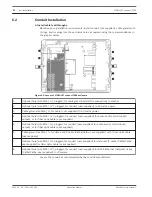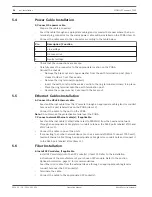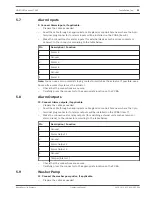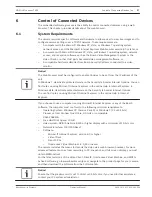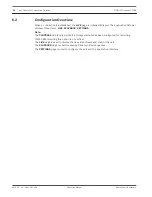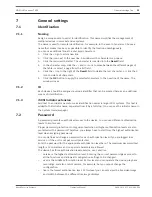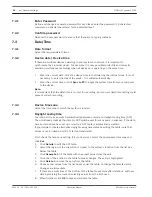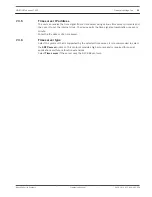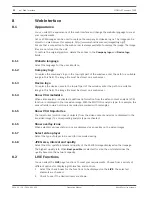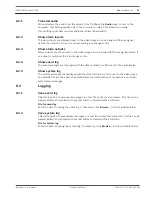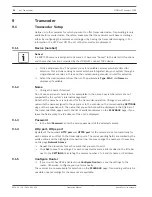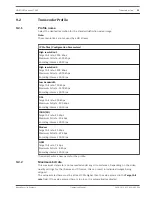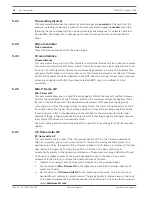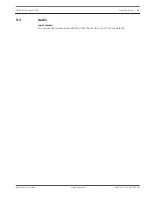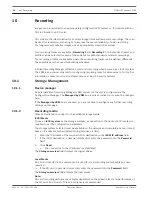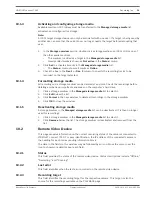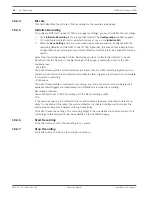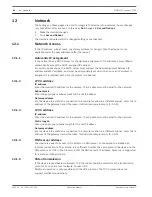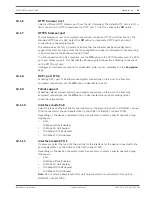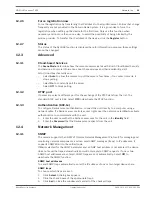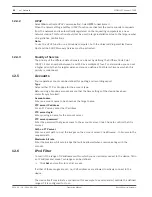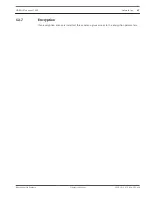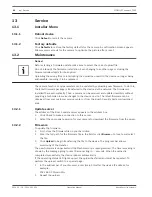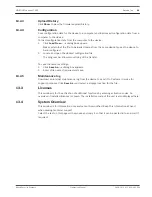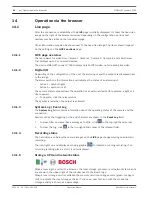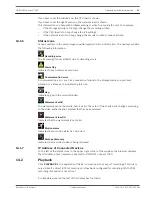
Transcoding interval
This parameter determines the interval at which images are encoded and transmitted. For
example, entering or selecting 4 means that only every fourth image is encoded, while the
following there are skipped, which can be particularly advantageous for networks with low
bandwidths. The image rate in (images per second (ips) appears next to the text field or
slider.
Video resolution
Video resolution
Select the desired resolution for the video image.
I-frame distance
I-frame distance
This parameter allows you to set the intervals in which the I-frames will be coded. Auto means
auto mode, whereby the video server inserts I-frames as necessary. Values range from 3 to 60.
An entry of 3 indicates that I-frames are continuously generated. An entry of 4 indicates that
only every fourth image is an I-frame, and so on; the frames in between are coded as P-frames.
Note that the values supported depend on the GOP structure setting. For example, only even
values are supported with IBP; if you have selected IBBP, only 3 or multiples of 3 are
supported.
Min. P-frame QP
Min. P-frame QP
This parameter allows you to adjust the image quality of the P-frame and to define the lower
limit for the quantization of the P-frames, and thus the maximum achievable quality of the P-
frames. In the H.264-protocol, the Quantization Parameter (QP) specifies the degree of
compression and thus the image quality for every frame. The lower the quantization of the P-
frame (QP value), the higher the encoding quality (and thus the best image quality) and the
lower the frame refresh rate depending on the settings for the maximum data rate under
network settings. A higher quantization value results in low image quality and lower network
load. Typical QP values are between 18 and 30.
The basic setting Auto automatically adjusts the quality to the settings for the P-frame video
quality.
I/P-frame delta QP
I/P-frame delta QP
This parameter sets the ratio of the I-frame quantization (QP) to the P-frame quantization
(QP). For example, you can set a lower value for I-frames by moving the slide control to a
negative value. Thus, the quality of the I-frames relative to the P-frames is improved. The total
data load will increase, but only by the portion of I-frames. The basic setting Auto
automatically adjusts to the optimum combination of movement and image definition (focus).
To obtain the highest quality at the lowest bandwidth, even in the case of increased
movement in the picture, configure the quality settings as follows:
1.
Observe the coverage area during normal movement in the preview images.
2.
Set the value for Min. P-frame QP to the highest value at which the image quality still
meets your needs.
3.
Set the value for I/P-frame delta QP to the lowest possible value. This is how to save
bandwidth and memory in normal scenes. The image quality is retained even in the case
of increased movement since the bandwidth is then filled up to the value that is entered
under Maximum bit rate.
9.2.3
9.2.4
9.2.5
9.2.6
9.2.7
36
en | Transcoder
VIDEOJET connect 7000
2014.10 | 1.4 | F.01U.291.524
Operation Manual
Bosch Security Systems
Содержание VIDEOJET connect 7000
Страница 1: ...VIDEOJET connect 7000 VJC 7000 90 en Operation Manual ...
Страница 2: ......
Страница 58: ......
Страница 59: ......

